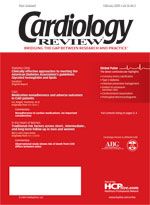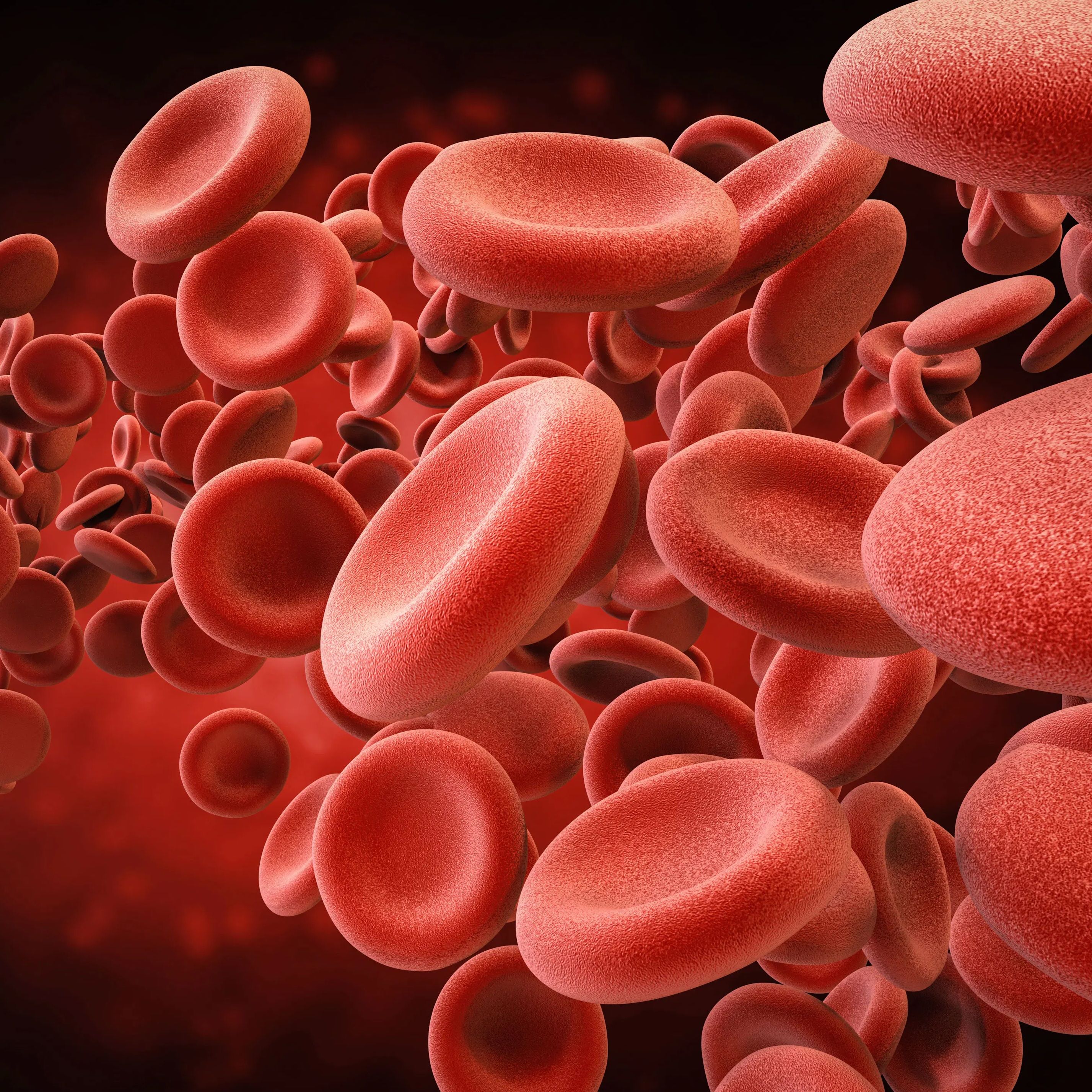Publication
Article
Ultrafiltration for heart failure
Author(s):
We compared the use of early, minimally invasive ultrafiltration with usual care in patients with acute decompensated heart failure in a randomized controlled trial. Ultrafiltration therapy resulted in greater fluid removal than standard therapy and was shown to be a safe and effective alternative to loop diuretics for sodium and fluid homeostasis in patients with heart failure. More research is needed to identify those patients most likely to benefit from this approach.
Fluid management in heart failure has changed little since the introduction of loop diuretics more than 50 years ago. Clinicians have tolerated the limitations of these drugs largely because there has been no reasonable alternative. Minimally invasive peripheral ultrafiltration is a new, attractive alternative to diuretics. Unlike loop diuretics, ultrafiltration is associated with adjustable fluid removal rates and volumes, favorable effects on neurohormonal activity and renal perfusion, and lack of electrolyte depletion.1-4 To further study the role of ultrafiltration in the management of patients with acute decompensated heart failure, we performed a pilot study to evaluate the reliability, safety, and effectiveness of early ultrafiltration versus usual care in patients admitted for heart failure.5
Patients and methods
The sample consisted of 40 patients admitted to 1 of 6 hospitals of the Minnesota Heart Failure Consortium with acute decompensated heart failure and volume overload. Patients were randomly assigned to usual care versus usual care plus a single 8-hour ultrafiltration session performed during the first 24 hours of hospitalization. Patients who received or were expected to receive radiocontrast medium during hospitalization, as well as those with hemodynamic instability necessitating the use of vasoactive agents, poor peripheral venous access, hematocrit above 40%, hypotension with a systolic blood pressure below 90 mm Hg, acute coronary syndromes, or severe valvular disease, were excluded from the study.
Ultrafiltration was performed by hospital ward nurses using a minimally invasive device (System 100, CHF Solutions Inc, Brooklyn Park, Minnesota). Intravenous (IV) access was obtained by placing a 16-gauge, 35-mm catheter in the antecubital fossa (withdrawal line) and a standard peripheral IV catheter (return line). Fluid removal rates were set at the discretion of the treating physician, but were usually 300 to 500 mL/hour for the 8-hour treatment period. Patients randomly assigned to the ultrafiltration group were not treated with diuretics during ultrafiltration and received these agents based on the judgment of the clinician following ultrafiltration. The primary end point of the study was the amount of weight lost 24 hours after study enrollment. Secondary end points were total fluid removal and symptom scores at 24 and 48 hours, vital signs, and laboratory measurements for safety. Patients were followed for 30 days to evaluate significant adverse events.
Results
A total of 20 patients were randomly assigned to receive usual care, and 20 patients were assigned to ultrafiltration. As shown in the
, baseline characteristics were typical for hospitalized patients with acute decompensated heart failure. Patients assigned to receive usual care were treated during the initial 24 hours with angiotensin-converting enzyme inhibitors or angiotensin receptor blockers (70%), diuretics (95%), and beta blockers (65%). The median time to ultrafiltration for patients in the ultrafiltration plus usual care group was 3.9 hours, and ultrafiltration was successful in 18 of 20 patients (90%). Blood could not be obtained from the catheter in 1 patient, and we were unable to achieve IV access in another patient.
P
P
Total fluid removal was greater in the ultrafiltration group than in the usual care group at 24 hours (4650 mL vs 2838 mL; = .001) and 48 hours (8415 mL vs 5375 mL; = .012;
P
P
P
). In the ultrafiltration group, weight loss was greater at 24 hours, although this did not reach statistical significance (2.5 kg vs 1.86 kg; = .24). Quality-of-life assessments were improved in the ultrafiltration group compared with the usual care group at 48 hours ( = .023 and = .039 for global heart failure symptoms and dyspnea symptoms, respectively). There were no major differences in blood pressure or heart rate between the 2 treatment groups, and there were no clinically significant differences in safety blood tests, including sodium, potassium, bicarbonate, chloride, blood urea nitrogen, and creatinine levels. There were no serious adverse events attributable to ultrafiltration; however, 1 patient in the ultrafiltration group developed a catheter-related infection necessitating IV antibiotics.
Discussion
The results of this study showed that early ultrafiltration in patients admitted with acute decompensated heart failure was safe, effective, and resulted in higher fluid removal rates at 24 and 48 hours vs patients who received only usual care. Vital signs, electrolytes, and measures of renal function were not significantly different between the 2 treatment groups, despite markedly greater fluid removal achieved in the ultrafiltration group.
Other investigators have reported comparable findings using minimally invasive ultrafiltration in heart failure patients.6,7 Results of 1 study showed that 21 patients with heart failure and volume overload who received an 8-hour course of ultrafiltration with the System 100 had a mean of 2611 mL of fluid removed and tolerated the procedure without any significant adverse events. In another study, 20 high-risk patients hospitalized for congestive heart failure were treated with multiple courses of ultrafiltration instead of loop diuretics to achieve euvolemia.7On average, these patients had 8.6 L of fluid removed with ultrafiltration without serious adverse events. In fact, 60% were discharged from the hospital in 3 days or less, and there was only 1 hospital readmission for heart failure over the 90-day follow-up period.
P
P
These studies, in addition to the current study, establish ultrafiltration therapy as an alternative to standard diuretic-based treatments in patients with acute decompensated heart failure. A larger study, UltrafiltratioN Versus IV Diuretics for Patients HospitaLized for Acute Decompensated Congestive Heart Failure (UNLOAD), has recently been completed.8 In this trial, 200 patients hospitalized for acute decompensated heart failure were randomly assigned to usual care versus ultrafiltration for the initial fluid management strategy. Patients randomized to the ultrafiltration treatment group received no diuretics for 48 hours and received ultrafiltration alone for management of sodium and fluid homeostasis. Patients randomized to the usual care treatment group received usual heart failure therapies including aggressive intravenous diuretics. Forty-eight hours after randomization, the ultrafiltration-treated patients experienced significantly greater weight loss (5.0 kg vs 3.1 kg, = .001). There were no significant differences in dyspnea score, BNP levels, New York Heart Association classification or adverse events. Ultrafiltration-treated patients experienced fewer rehospitalizations, emergency department visits, and unscheduled clinic visits over a 90-day follow-up period ( = .037).
Ultrafiltration therapy offers both practical and theoretical advantages over standard diuretic-based approaches to fluid management in patients with heart failure.9 It results in rapid and predictable corrections of fluid and sodium homeostasis and is not associated with dangerous electrolyte disturbances.1 These features could contribute to the efficient management of patients hospitalized with acute decompensated heart failure, resulting in rapid symptomatic improvement and decreased length of hospital stay.
Theoretical benefits of ultrafiltration therapy include an overall improvement in sodium homeostasis, as well as a diuretic-sparing effect.9 Compared with loop diuretics, ultrafiltration results in greater sodium excretion (ultrafiltration fluid is isotonic compared with the hypotonic fluid removed with diuretics). Because heart failure is characterized by a sodium imbalance, restoring normal sodium homeostasis may have long-lasting effects on renal perfusion, cardiac hemodynamics, and symptoms. In addition, diuretics have been associated with poor outcomes in patients with congestive heart failure.10-12 High doses of loop diuretics may merely reflect the progression of advanced heart failure and serve as a marker for a poor prognosis. It is also possible, however, that loop diuretics have a causal relationship with poor outcomes in these patient populations. Possible explanations for such a causal relationship could include the induction of significant electrolyte abnormalities, activation of the sympathetic nervous system, adverse cardiac remodeling, and induction of the cardiorenal syndrome.9
For the practical and theoretical reasons previously outlined, it is possible that the method of fluid removal may significantly affect short- and long-term outcomes in patients with heart failure. The results of the UNLOAD study suggest that long-term outcomes may be favorably affected by ultrafiltration therapy.
Conclusion
Minimally invasive ultrafiltration therapy may be the most effective approach to fluid and sodium homeostasis in certain patients with heart failure. In our study, it resulted in greater fluid removal compared with standard therapy and was shown to be a safe and effective alternative to treatment with diuretics. More research is needed to identify those patients most likely to benefit from ultrafiltration.






